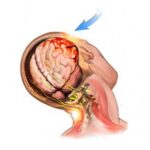A multi-vehicle accident on the morning of August 5, 2010 in Gray Summit, Missouri has led the National Transportation Safety Board (NTSB) to urge states to ban cell phone use while driving. An investigation into the accident by the NTSB concluded that a pickup truck driver’s frequent texting while driving, combined with fatigue, led to the accident. Two people lost their lives and thirty-five were injured in a series of collisions involving four vehicles. The pickup truck collided with the back of a semi traveling without a trailer. A school bus going the same direction then struck the pickup truck, and a second school bus struck the lead bus. The pickup truck driver and a passenger on the lead bus died. The NTSB identified multiple factors that led to the crash, but it concluded that distracted driving played a significant role. The pickup truck driver may have sent or received as many as eleven text messages in the eleven minutes preceding the crash.
As a result, the NTSB has recommended that all fifty states and the District of Columbia enact bans on all non-emergency use of portable electronic communications devices, such as cell phones, while driving. It also recommends creating a “high visibility enforcement” campaign consisting of visible and intensive enforcement of the law combined with extensive publicity and outreach. This approach has been very successful with various campaigns by the National Highway Traffic Safety Administration (NHTSA), such as their campaign to publicize and enforce seat belt laws, “Click It or Ticket.”
The NTSB and NHTSA are government agencies established to promote transportation safety through research and publicity. The NTSB lacks the legal authority to create laws on its own, but its recommendations command the attention of lawmakers. It has previously supported various bans on specific uses of cell phones and other devices, including texting and driving, but now it urges a total ban on all talking and texting while behind the wheel.
The NTSB’s investigation also found that the driver of the lead school bus was likely distracted by another vehicle on the side of the road, and that the driver of the second bus failed to maintain a safe distance from the first bus. It issued recommendations to the Missouri governor’s office to revise safety procedures for the operation of school buses, particularly regarding driver distractions, as well as procedures for emergency evacuations of school buses.
As many as 3,092 traffic fatalities resulted from “distracted driving” in 2010, according to NHTSA estimates. Cell phone use while driving, especially texting, appears to be escalating around the country. The NHTSA estimates that one in a hundred drivers are actively using their cell phones while driving, with younger drivers doing so in even greater numbers. Stemming this tide may prove difficult. Even though 35 states and the District of Columbia have banned texting and driving, the practice continues, possibly increasing at alarming rates.
The trade association representing the cell phone industry, the CTIA, has not indicated any specific opposition to a ban on talking while driving. It has previously supported texting-while-driving bans, and has reportedly stated that it will follow the lead of voters and lawmakers. The simple fact that cell phones are everywhere seems to be the biggest impediment to a ban at this point in time.
Kansas City auto accident attorney Doug Horn advocates safe driving and represents the rights of people who have suffered injuries in auto accidents. For a free and confidential consultation, contact us today online or at (816) 795-7500.
Web Resources:
“Guidelines for Developing a High-Visibility Enforcement Campaign to Reduce Unsafe Driving Behaviors among Drivers of Passenger and Commercial Motor Vehicles” (PDF), National Highway Transportation Safety Administration




